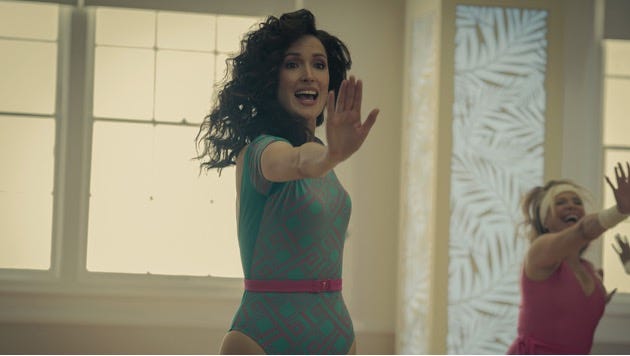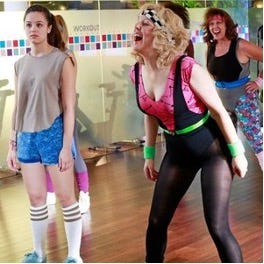Let’s Get Physical
A Tribute to Video Exercise
Discussed: Online exercise, aerobics, yoga, spin, the pandemic, Zoom, Yoga With Adriene
Recently, a friend asked if I had any other regular practices besides writing. I think she was anticipating my answer to be something related to the arts, but, besides writing, the practice I am the most consistent with is going to exercises classes. I love the rush of an aerobic workout, the thrill of finding that I’m able to do a new yoga pose, and, since the start of the pandemic, I have been moved by the extremely tenderhearted way that online instructors create relationships with their students even though they often can’t see us at all.
Certainly, other forms of exercise are cooler. Runners who train for marathons seem more dutifully elegant; ballet dancers more in touch with the artistry of the body; boxers, at least kind of tough. Despite their popularity, aerobics classes are maligned as kitschy, feminine, inconsequential, the kind of thing that bored ladies who have nothing better to do. Years ago, after getting out of a yoga class, a fellow yogi admitted he was patently disinterested in classes like dance or spin. “It’s just skinny girls and middle-aged women,” he said, before suggesting that perhaps I would also enjoy it.
In the world of pop culture, ladies who go to aerobics, yoga, and spin classes are presented as an army of bored housewives, vapid gossips, and mean girls. But in real life, I’ve found real camaraderie in exercise classes. There is a unique energy that comes from being in synchronized movement with a whole class full of people, just as there is a specific power to being in a packed concert singing in unison along with your favorite band. Some writers may wax on about the joy of running along an empty trail in the middle of idyllic nature; I prefer the simpler pleasure of learning a routine on a dance floor to a loud Shakira remix.
One of the reasons I enjoy dance classes so much is I have absolutely zero aspirations of making this some sort of serious professional goal. My dance classes feel like a breezy escape. When the pandemic started and group exercise came to a halt, I began my foray into online exercise with some trepidation wondering whether an online class provide the same joyful experience as an in-person one. To cultivate community, some classes embrace digital forms of interactivity with live online classes that mimic the energy of a video game, asking participants to leave comments and drop enthusiastic emojis into the chat while we are all working out together.
While I appreciate the way these classes echo an in-person experience, I have also found myself surprisingly moved by the experience of taking pre-recorded classes. As any teacher who has taught to the many camera-off boxes of a Zoom screen can attest, the experience of teaching a class when you can’t see the people you are teaching is an exercise is existential terror. Does what you are saying matter? Can anyone hear you? Does anyone want to? The best online instructors are undeterred by the ever-present threat of disconnection. They tell jokes and share personal stories. They invite viewers to think about their digital practice as something that matters. Yoga With Adriene is an especially beloved form of online exercise not because it is flashy but because Adriene regularly reminds her viewers that they are in community with each other.
In this way, an online class is a quieter pleasure than in-person exercise, the difference between attending a concert and being curled up in your living room listening to an album you love. I’m moved when an onscreen instructor congratulates me on doing a good job precisely because I know she has no idea if I completed the video segment or just watched from a chair for 28 minutes. It’s the bid for connection that matters more than any specific goal.
When I was teaching exclusively online during the pandemic, many students asked me if our experience together was “real.” The question spoke to a pain that was genuine—it acknowledged the value of our time together, while recognizing that our inability to be in the same physical space was also a kind of loss. Today, an at-home class feels less like a substitute for an in-person experience and more like a deliberate turn inward. At home, I’m less self-conscious if I don’t get a particular pose or if I mess up the steps to my dance routine. I’ve learned to laugh more at my mistakes, to clap for myself when an instructor congratulates me for showing up. I always like to read the comments left for the instructor, little digital artifacts from the people who came to the video before me, a reminder that even if we didn’t move our bodies at the same exact time, we still danced to the same songs.
It feels real because it is.








